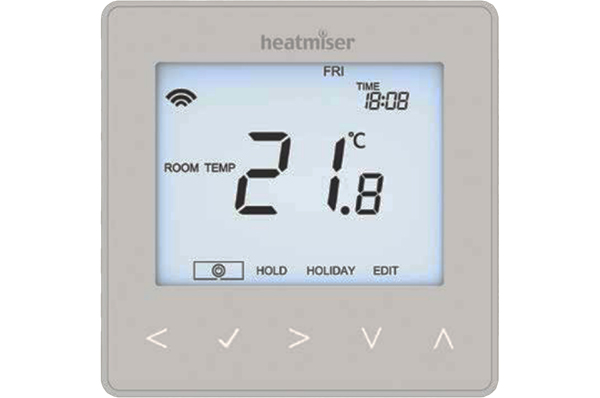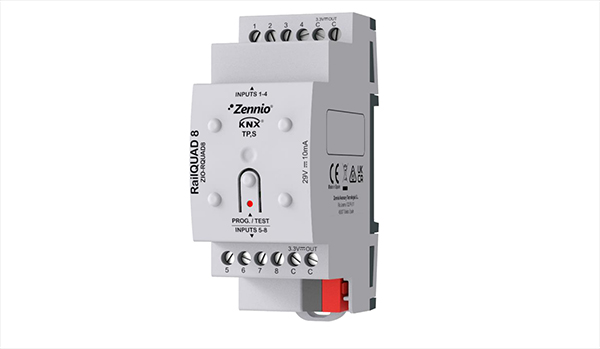
Simon Buddle outlines why doing proper calculations and specifying KNX for heating can save time and money.
It seems an odd thing to be sitting here in 30 degrees heat about to write an article about a heating system that went wrong. Well, when I say ‘went wrong’, that’s not quite true. The system, as installed, did exactly what it should do. It opened and closed thermal actuators on a manifold, and it successfully turned on the pump to circulate the heat through the underfloor heating. Moreover, it opened the solenoid valve to run the hot water and it even ran the hot water circulation pump – arguably a job it wasn’t designed to do.
And therein lies the whole issue I have had with this system; there was no design. No one put pen to paper and worked out what was needed to deliver the primary purpose of the system, to keep the clients warm.
Let me take you back to the beginning.
Leaving the heating to someone else
Working with another KNX integrator, e-h-t.uk, I was asked to provide a lighting control panel, programming and final commissioning. It was a full refurbishment of a three-storey London house. KNX was proposed for the lighting and heating. Whilst the homeowner was keen on KNX for the lighting, it seemed that the heating system fell under the remit of the architect and his onsite team. ‘Duly noted,’ they said, ‘but we’ve got the heating controls in hand and therefore would only need KNX for lighting.’ The work on the project began in the autumn of 2023. Lighting controls were installed by early January 2024, and that was that. Or so we thought…
During a visit to add the garden lights onto the system for the family, I was asked if I had any experience with heating controls as they were somewhat stuck for a solution to a major problem they’d experienced in the late winter, namely that the house simply wouldn’t get to temperature on colder days. Even if they left the heating on 24 hours a day in all rooms, the house never felt warm or comfortable.

A meeting was called with all the relevant parties. The first important issue that came to light was that no SAP (Standard Assessment Procedure) calculations had been done. These calculations are used to estimate the energy performance of the home and how much heat one needs to pump into the home in order to keep it at a given temperature. Problem one is unearthed. Problem two soon rears its head. The UFH pipe layout was based upon an example drawing sent out by the pipework manufacturer. These two problems went hand in hand to give rise to the fundamental issue reported by the homeowner; that the house doesn’t get to temperature on cold winter days.
The electrician suggested a solution using some 230V relays, a couple of extra Heatmiser room thermostats, along with electric radiators in the affected areas. The client could then use those if the house got too cold. At best this might be described as clunky.
The KNX thermostat
After a five-minute explanation of how a KNX thermostat works, it was agreed that this would be the right solution.

KNX RF saved the day. The simple solution for the new radiators was to install Theben KNX RF switches to operate them. The manifold locations were close to the existing bus cable, so we were able to add in a couple of new runs to gain control of the existing pumps and valves. The standard functionality of a KNX thermostat meant that we could now control the underfloor as the primary heating with the radiators kicking in automatically using the second-stage heating function. All Heatmiser temperature sensors are in fact NTC10K compatible, which means that by adding a Zennio RailQUAD 8 analogue/digital input module, we were also able to connect all of the existing in-room temperature sensors directly to the Heatmiser.

Costs
We sold a few new bits of hardware and programming, but the majority of the cost came down to labour. First, we had to strip out all of the old electronics before we could install. In most instances (we have now installed four small KNX heating control panels), it took longer to strip out than it did to put in the KNX panels – labour that is often overlooked. It would be interesting to know exactly how much it cost the builders, given that they effectively had the heating controls installed twice. My guess is considerably more than it would have cost to install KNX in the first place!
Conclusion
From our perspective this was a straightforward solution. From the other party’s, it’s an object lesson in ensuring that designs and calculations are done and implemented onsite. Corners had been cut and it came back to bite them. Had the SAP calculations and underfloor design been done, none of this would have been an issue.
The fact that KNX is almost unendingly flexible and configurable meant we could solve problems that others simply weren’t able to. And more than that, it was a robust and elegant solution providing exactly what the client required.
Simon Buddle CEng MIET, is a consultant for Future Ready Homes, a specialist in BMS and ELV services system design.













